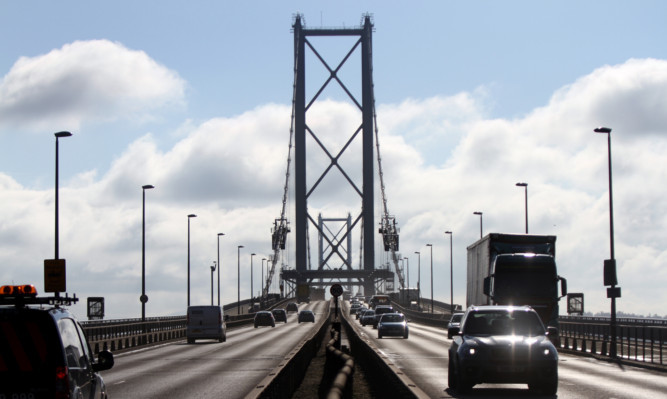The Forth Road Bridge’s main cable has been permanently damaged and will need to be monitored for the rest of the structure’s working life.
It has been revealed the lifespan of the 48-year-old structure could be decades longer than previously thought after dehumidification equipment was used to dry out the main supporting cable, which had suffered corrosion.
An inspection indicated the dehumidification project had significantly slowed down corrosion of the thousands of individual steel wires that bear the weight of the bridge.
But chief engineer and bridgemaster Barry Colford said wires within the cable could continue to break.
He said: “Although the corrosion appears to have slowed down, we know there are cracks in the wires of the bridge which may never heal.
“These cracks may eventually lead to breakages but the rate of wire breakages is expected to slow significantly.
“Given this, we don’t expect the cables to lose significantly more strength in future so long as the dehumidification system continues to function effectively.
“These findings show that the factor of safety in the cables has not materially diminished since the previous inspection in 2008.
“This gives strong comfort that the newly installed dehumidification system is slowing down corrosion of the 11,618 wires that make up each main cable.”
Bridge operators Forth Estuary Transport Authority (Feta) have also installed an acoustic monitoring system, which picks up the sounds made by breaking wires within the cable.
Mr Colford said this system should be “augmented” in future. The opening of the Queensferry crossing under construction is expected to prolong the life of the existing road bridge.
Mr Colford said: “The Government intends to run buses and public transport across the bridge to ensure that the bridge will have a service life.”
Feta members were updated on plans to hand over the bridge to a new operator, who will be responsible for the Forth Road Bridge and the new crossing.
A tendering process is to be launched in December, with the contract awarded to the new operator next year. The operator will take over in June 2015.
Whoever wins the bid will be faced with a major repair bill, and in the absence of bridge tolls the money would have to come from the Scottish Government.
In the region of £20-25 million would have to be spent on replacing the bridge’s antiquated expansion joints.
Mr Colford said, because of financial constraints, only “essential” and not “desirable” maintenance could be funded.
However, he said delaying work pushed up final costs.
